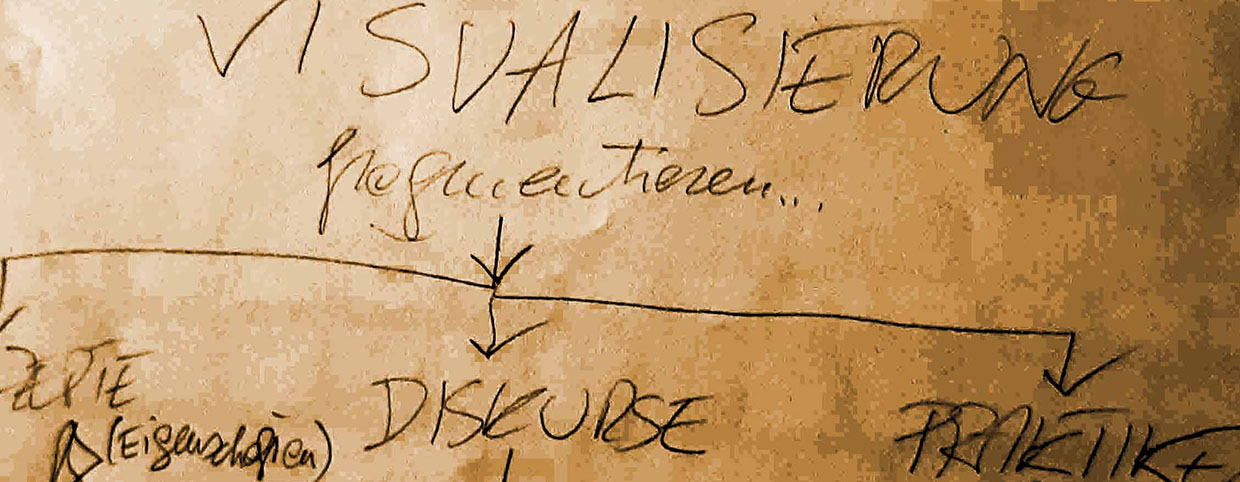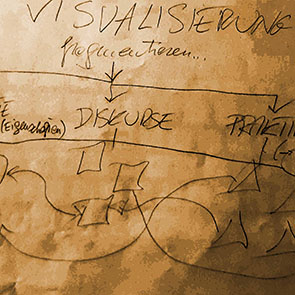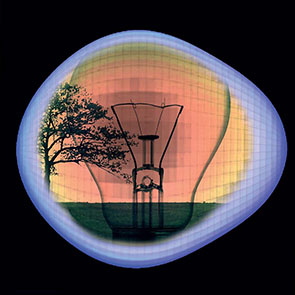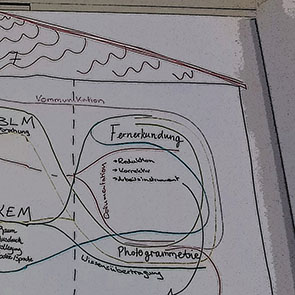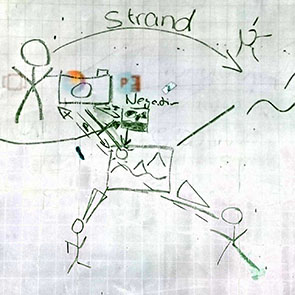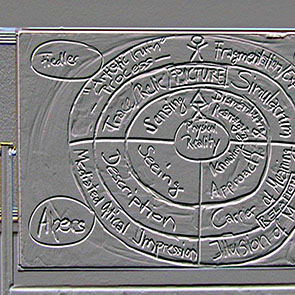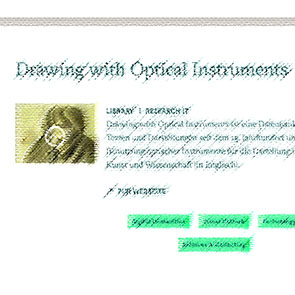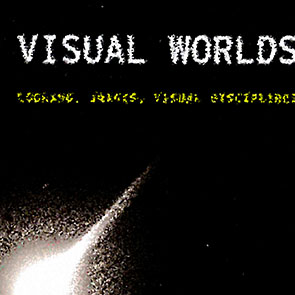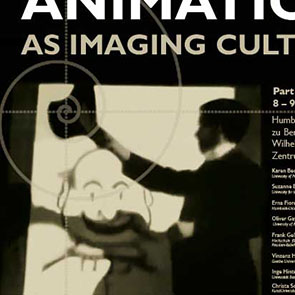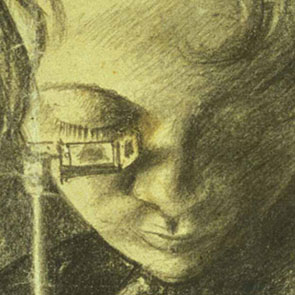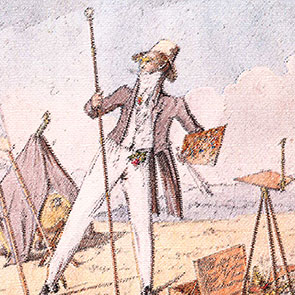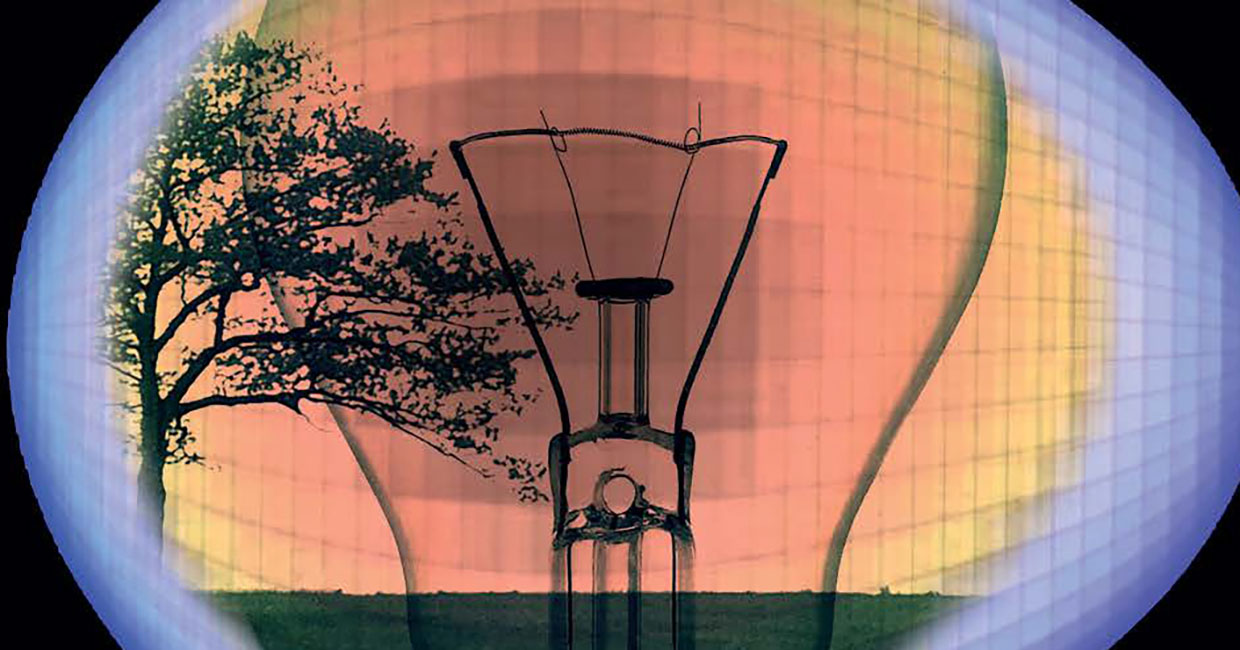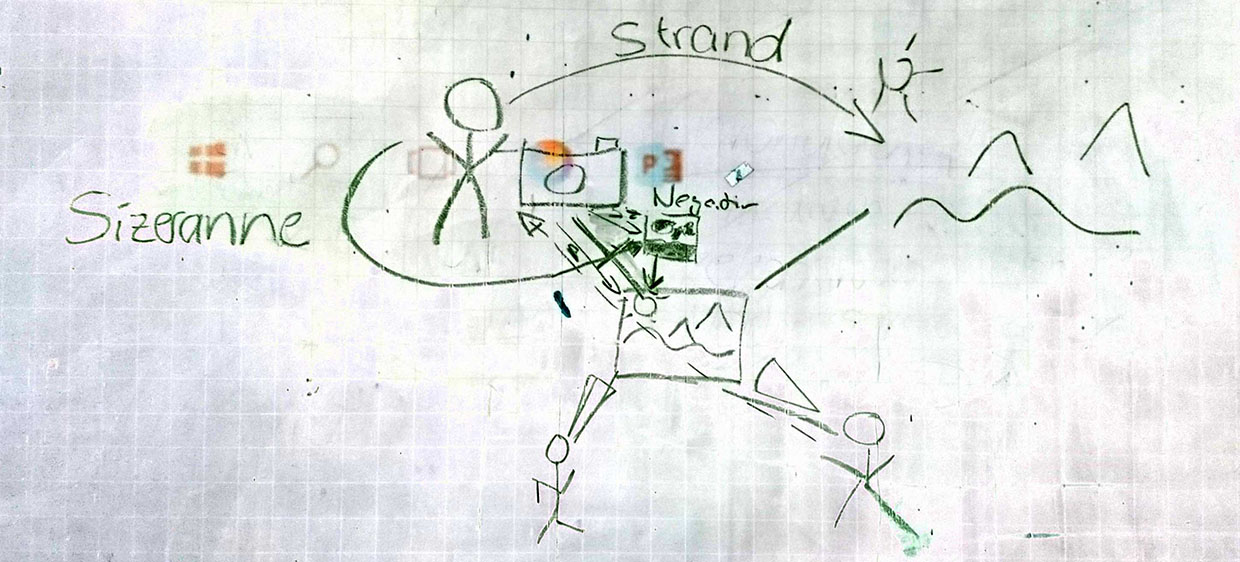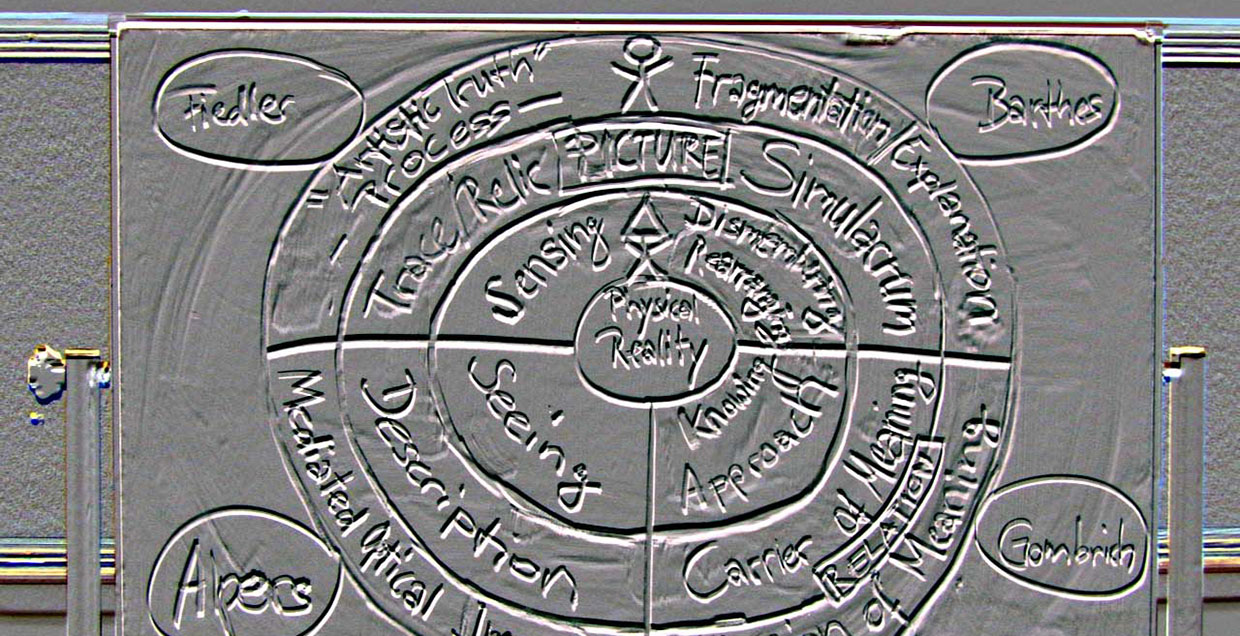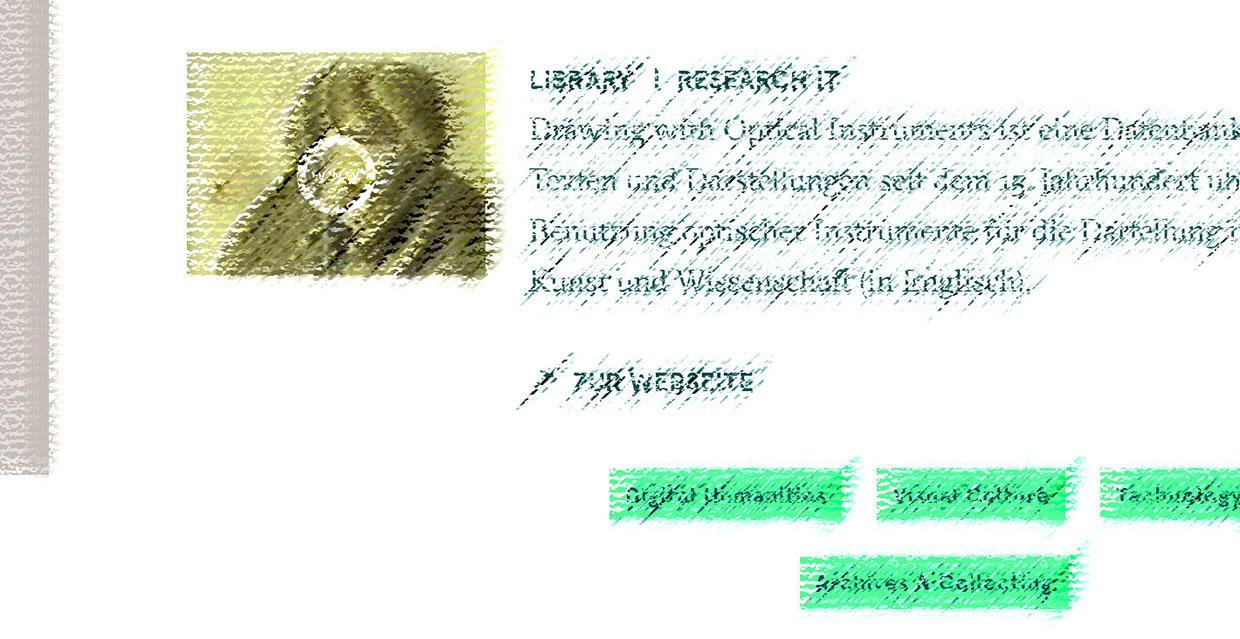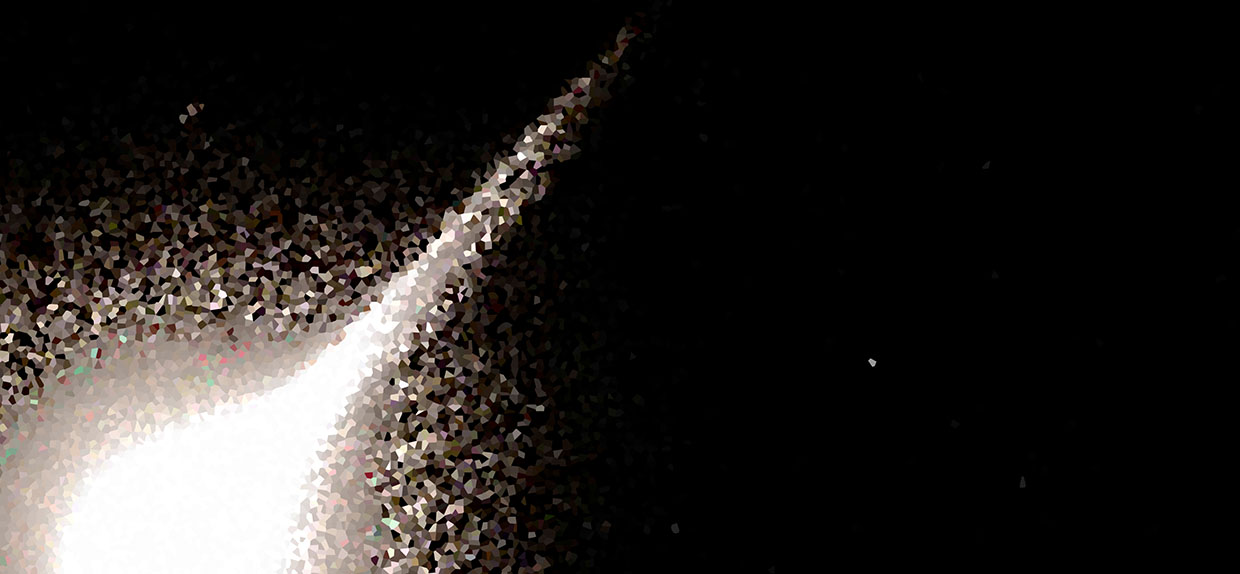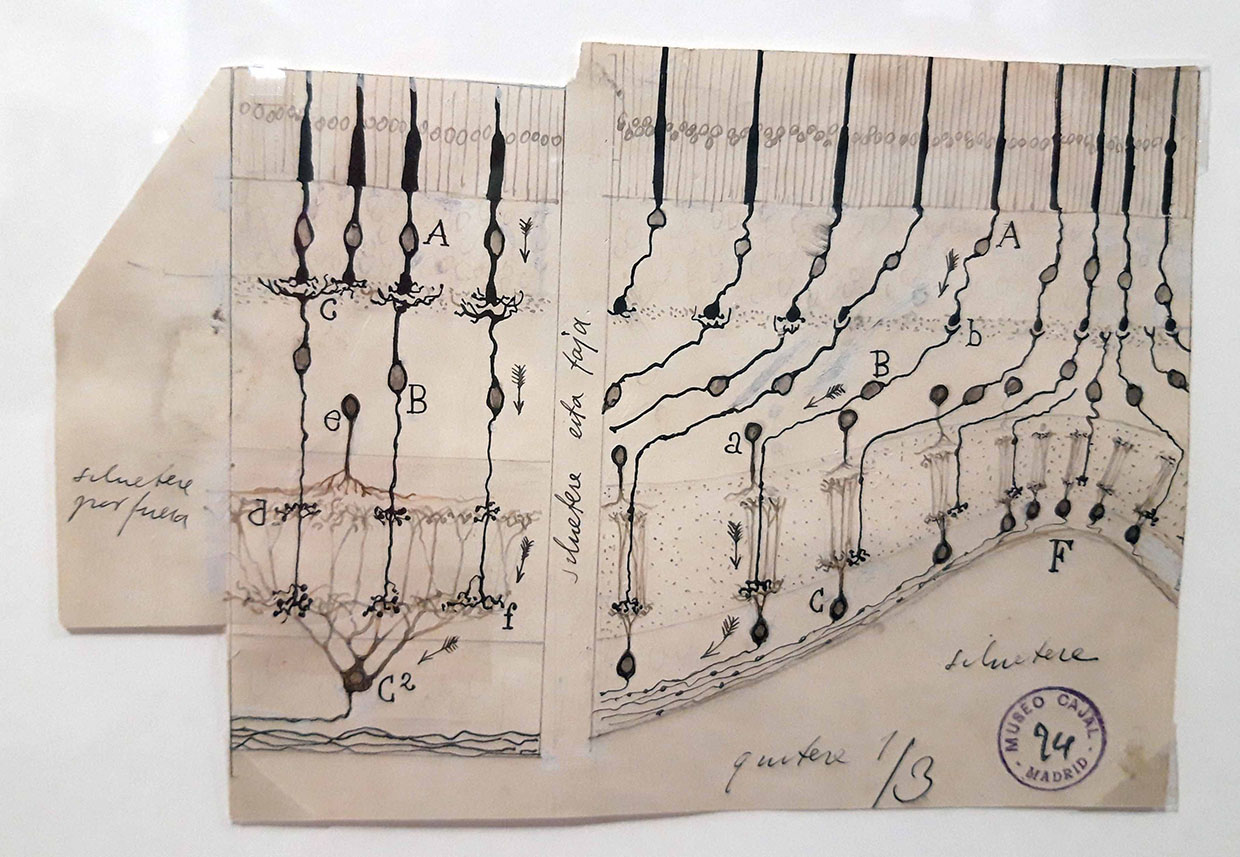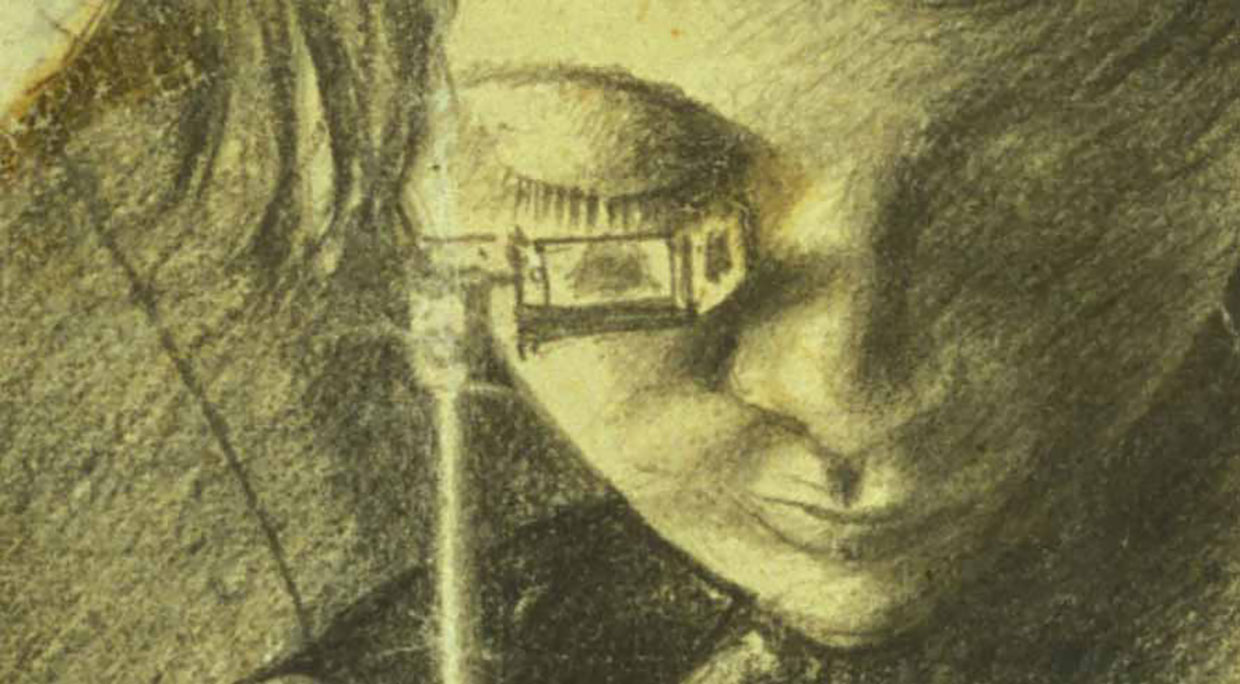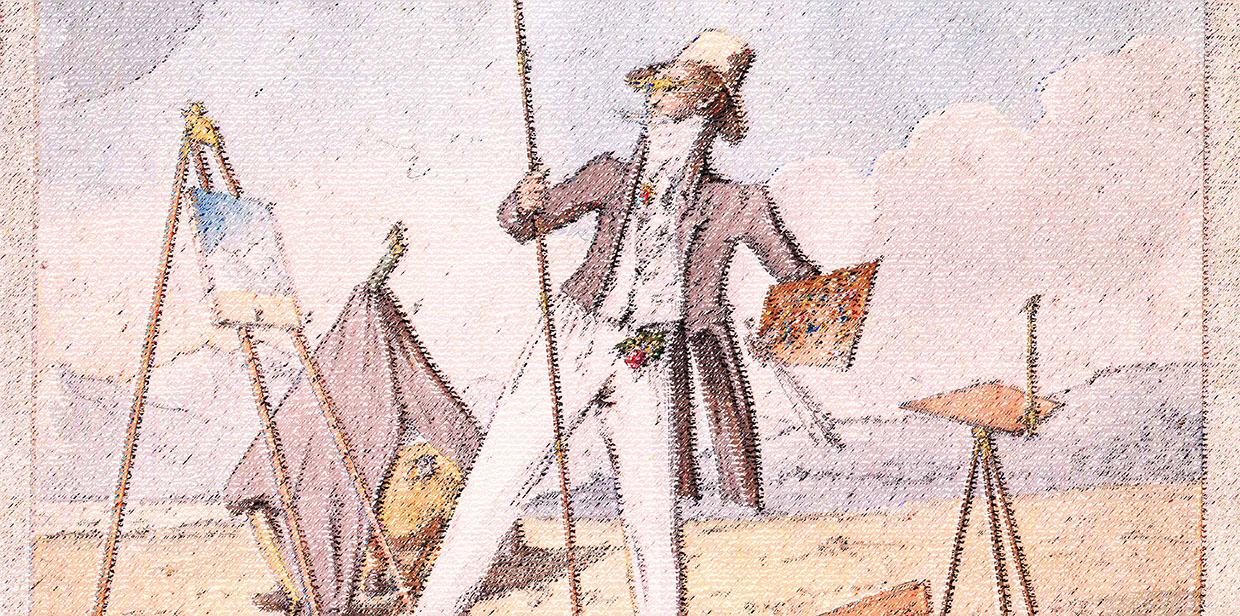Forschungsschwerpunkte | main research interests
Als Grenzgängerin zwischen Natur- und Geisteswissenschaften konzentriere ich meine Forschung und Lehre auf die Geschichte und Theorie von Begriffen des Sehens und Visualisierens als Komponenten des Wissens und der Ästhetik. Dabei interessiert mich das Verhältnis von Kunst und Wissenschaft und die Epistemologie, Ästhetik und Intention von Bildproduktionsprozessen in vielen Kontexten und Diskursen: dazu gehören das Zeichnen als ästhetisch-epistemischer Prozess, die Bedeutung von analogen und digitalen Zeicheninstrumente, die Entstehung von Landschaftsbildern - in jeder Bildtechnik - und die Natur der Konzepte von Raum und Erlebnis in diesen Bildprozessen. Die Kritik von fotografischen Begriffen und Auffassungen sowie von kunst- wie wissenschaftshistorischen Methoden für die Erforschung dieser Felder sind rote Fäden in meinem Fragen.
As a frontier runner between the natural sciences and the humanities, my research focuses on the history and theory of notions seeing and visualization as components of knowledge and aesthetics. In this, I am interested in the relationship between art and science and in the epistemology, aesthetics and intention of Image production processes in many contexts and discourses: among others drawing as an aesthetic-epistemic process, the meaning of analogue and digital drawing instruments, the genesis and genealogy of landscape images – of any kind of imaging technique – and the nature of concepts of space and experience in such imaging processes. The critique of photographic notions and of methods – from art history and the history of science – to study these many fields are the constant thread of my research.
Aktuelle Projekte | current projects
Abgeschlossene Projekte | completed projects
Vorgänge des Visualisierens gehören inzwischen zu den unerlässlichen (und unausweichlichen) Kommunikationspraktiken in nahezu allen Lebensbereichen. Während sich das Visualisieren zur universalen Praxis entwickelt, wird die Vielfalt seiner Praktiken, Motivationen und Intentionen, Absichten und Zwecke immer unüberschaubarer, genauso wie die Multiplizität seiner Anwendungsbereiche. Visualisieren gestaltet sich also jeweils partikulär. Paradoxerweise wird aber für all diese lokalen Varianten meist unterschiedslos der Ausdruck Visualisierung verwendet, zudem meist ohne Rücksicht auf seine doppelte Bedeutung als sowohl den Prozess und das Bildprodukt der Sichtbarmachung. In meinem Projekt meine ich, dass es im Sinne einer historischen Bildwissenschaft an der Zeit ist, auf diese Pauschalisierung zu antworten und die plurale Dimension des Visualisierungsbegriffs zum Thema zu machen. Mit dem bildhistorischen Ziel vor Augen, den Weg für eine künftige Kulturgeschichte der Visualisierung zu ebnen, geht es mir um die Frage, ob und wie die differente Logik der Visualisierung kontextadäquat erfasst und charakterisiert und damit eine typologische Geographie des Visualisierungsbegriffs skizziert werden kann (und soll).
Für eine erste Anwendung der Methodik zu diesen Fragen siehe das Projekt Überall Visualisierung. Eine Konzept- Diskurs- und Praxiserkundung im Programm „Experimentelle Forschungslehre“.
Visualizing belongs to the indispensable (and also inescapable) practices of communication in virtually all areas of everyday life. The variety of different practices, motivations and intentions, aims and purposes in processes of making visible is ever growing. Yet the components of this variegated phenomenon are mostly indiscriminately described using just one term – Visualization -, which also stands for both the process and the products of making visible.
The project makes an issue of this plural dimension of visualizing. Challenging the generalization of this notion, it juxtaposes particular notions of visualizing to the current overarching and universal one. Investigating the validity, the criteria and the characteristics of visualizing in different discourses of application, it seeks to identify the character of local variants of visualizing and their self-conception and to systematize them – without taxonomical ambitions - in a broader typology. The goal of this comparative critique of qualities and categories is a geography of visualizing that allows for more accurate descriptions and notions of its forms and variants. This comparative critique of categories of visualizing wants to do justice to the overwhelming plurality of visualization processes we are currently facing. It is unlikely that new terms can be coined to describe single practices and intentions of visualizing. But a coherent and appropriate language can be designed to describe ways of visualizing as phenomena with variable visual logics, goals and values.
With this, the project intends to pave the way for a methodical discussion of a future cultural history of visualization.
For a preliminary investigation of methods and question for this sake, see the project Visualization everywhere. Questioning Concepts, Discourses and Practices in the Program „Experimental Research-Based Teaching”.
Erna Fiorentini (ed.), On Visualization. A Multicentric Critique Beyond Infographics, forthcoming with LIT Verlag Berlin 2020. Inhaltsverzeichnis | table of contents here
Funded by DFG - Deutsche Forschungsgemeinschaft
Das ist ein Buchprojekt, das als eine Untersuchung über die Angemessenheit eines universellen Begriffs von Visualisierung begann, vorgenommen aus einer interdisziplinären und multizentrischen Perspektive. Diese Untersuchung (Visualization. A Critical Survey of the Concept, Conference Program here) wurde ausgetragen als ein Gespräch zwischen Feldern, die Bildprozessen mit verschiedenen Erwartungen begegnen: von der Philosophie, der Ästhetik und der Epistemologie über die Literatur und die Kunst sowie die Ökonomie und Soziologie, bis hin zur Mathematik, den Naturwissenschaften, der Medizin und den Neurowissenschaften, zur Computerphysik und big data processing.
Dieses Buch wählt daraus bewusst Reflektionen über Visualisierung, die aus anderen Kontexten und Diskursen kommen, als die der Evidenzproduktion durch Bilder aus großen Datenmengen (oder Infografik). Die Visualisierung, die hier besprochen wird, ist oft eine verborgene, zum Teil nicht visuelle Form von Visualisierung, die sogar Vorgänge des Unsichtbarmachens impliziert. Was die Objekte des Visualisierens in diesen Diskursen gemeinsam haben, ist die Immaterialität: sie sind Gedanken, Prozesse, Ideen, Intentionen, Hypothesen oder Vermutungen. In jedem dieser Diskurse ergeben sich spezifische, individuelle Charakterzüge der Visualisierung, die über zweckbestimmte Techniken und Technologien hinausgehen und die Frage des „sichtbar Werdens“ übersteigen.
This is a book project that began as an exploration of the adequacy of a universal notion of visualization from an interdisciplinary and multicentric perspective. This exploration (Visualization. A Critical Survey of the Concept, Conference Program here) gathered fields approaching the iconic process with different expectations: from Philosophy, Aesthetics and Epistemology, Literature and the Arts through Economics, Sociology, the Natural Sciences, Mathematics, Medicine and the Neurosciences, Computational Physics and Data Processing.
For this book, we have chosen a more selective horizon for the discussion: here, the reflections about visualization come from discourses and contexts in which visualization is not a tool producing evidence from large amounts of data and information (or Infographic, as Oxford English Dictionary define such visualizations). Visualizing as studied here is often a hidden, partly non-visual form of visualizing and imply even processes of “making invisible”. What the objects of visualizing have in common here, is immateriality: they are thoughts, processes, ideas, intentions, assumptions. In each of these discourses, visualization turns out to have a specific, individual character that goes beyond purposive techniques and technologies and exceeds the question of “becoming visible”.
Forschung-in-der-Lehre-Projekt im Rahmen des Programms „Experimentelle Forschungslehre“ verbunden mit dem Projekt Visualisierung Fragmentieren. Fragen für eine Typologie.
Research-based-teaching project in the program „Experimental Research-Based Teaching” link zu „Experimentelle Forschungslehre“ connected to the project Fragmenting Visualization. Questions towards a Typology.
Die Idee für dieses Buchprojekt ist hervorgegangen aus meinen Vorlesungen und Seminaren zur Landschaftsfotografie zwischen 2016 und 2019 mit Studierenden der HU und FU Berlin, der Uni Heidelberg und des KIT Karlsruhe (Dokument, Kritik, Ästhetik – Landschaftsfotografie).
Der Begriff Landschaftsfotografie ist komplex und setzt sich aus unterschiedlichen Schichten von Bedeutung zusammen. Landschaftsfotografien können in diesem System die Aufgaben und die Rolle von Dokument, von Kritik und ästhetischer Position mehr oder weniger gleichzeitig vereinzelt annehmen - oder aber in Konkurrenz zueinander treten oder miteinander zusammenwirken.
Es gibt dabei eine ständige Vermischung und Entmischung von Methoden, Typen und Spielfeldern der Landschaftsfotografie. Sie wird zu einem fließenden System, das sich nur schwer in eine einfache systematische Struktur einordnen lässt. Können wir dann einfach von Landschaftsfotografie als einem Bildgenre sprechen? Ist Landschaftsfotografie nicht vielmehr ein Phänomen, das sich unter verschiedenen Bedingungen anders ereignet?
Das Buch will diesen Fragen nachgehen und einen Rahmen suchen, in dem das Phänomen Landschaftsfotografie präzisiert, historisiert, theoretisiert werden kann, was bisher nicht zusammenhängend geschehen ist. Diesen Rahmen soll entstehen aus den Begriffen, Typen und Aktions-/ Wirkungsfelder der Landschaftsfotografie, die sich ergeben aus der Befragung der Landschaftsfotografie in verschiedenen Systemen (Kunst, Wissenschaft, Militärwesen, Reise- und Alltagskultur...) sowie aus der Überprüfung verschiedener Parametern für Ihr Wesen und Wirken (Beobachtung, Erlebnis, Objektivität, Gestaltung, Rolle und Position (räumlich und ethisch) der Betrachtenden, Verhältnis zur Umgebung/Umwelt/Realität/ Wahrheit; physische und kulturelle Aneignung von Räumen (Natur- und Kulturräumen); Formen von Kartierung).
Diesem Projekt wurde auch mit den Studierenden im Rahmen des Programms „Experimentelle Forschungslehre“ in einem Forschung-in-der-Lehre-Seminar im Sommersemester 2020 nachgegangen.
Die Idee dieses Buches ist hervorgegangen aus meinen Tagungs-Blockseminaren mit Studierenden der HU und FU Berlin und der University of Oxford zwischen 2012 und 2014.
Es geht um Auffassungen von Sehen und um ihren Niederschlag in Abschnitten der Bildgeschichte. Mit dem Wortspiel Ansichtswechsel / Changing the Point of view, was Perspektivenänderung im sowohl engeren, physischen Sinne von „Sehen“ als auch im übertragenen Sinn von „Meinung“ signalisiert, will ich auf die wechselhafte Geschichte der Auffassungen von Sehen und auf ihre Bedeutung für die Geschichte von Bildpraktiken und Bildtheorien neugierig machen. Die Basisstruktur des Buches folgt meiner Vorstellung einer Instrumentenmetaphorik für verschiedene Abschnitte der Geschichte des Sehens und Verbildlichens. Hier soll also auch handfest an die praktische, historische und philosophische Bedeutung von verschiedenen Verbildlichungsdispositiven herangeführt und zugleich an der Entstehung einer Theorie aus erster Hand partizipiert bzw. diese kritisch evaluiert werden.
Diesem Projekt wird auch mit den Studierenden im Rahmen des Programms „Experimentelle Forschungslehre“ [ link zu „Experimentelle Forschungslehre“ in einem Forschung-in-der-Lehre-Seminar im Sommersemester 2021 nachgegangen.
The Open Research Library Drawing with Optical Instruments - Devices and Concepts of Visuality and Representationlink has been a 2003-2008 cooperation project of the Kunsthistorisches Institut, FU Berlin, the Library resp. the Digital Humanities Research IT of the Max Planck Institute for the History of Science - MPIWG Berlin and the Open Access Network ECHO -European Cultural Heritage Online.
Funded by DFG - Deutsche Forschungsgemeinschaft
The DWOI Open Research Library provides a rich database of texts and images from the 15th century until today. It enables to compare theories and practices of the usages of optical instruments for the sake of depiction in the Arts and Sciences. The long-term objective of this Open Digital Library is to set up a corpus of descriptions, opinions and notions related to theory and practice of the use of optical instruments for the sake of depiction in Art and Science. Furthermore, it intends to make available a set of illustrations of the optical drawing devices themselves as well as of the visual products resulting from their use. The principal goal is to facilitate analytical comparison and to offer a key to the multiplicity of the users' scopes, intentions and motivations, allowing to explore the conceptual premises leading artists and scientists to "arm their eyes" for drawing in different historical, aesthetic and epistemological contexts. Put in train with typical 19th-century drawing devices and application fields, the data collection gradually extended to other contrivances that are representative for modes of vision and representation in a much broader time span, tracing back to the 15th century. Additionally, several 20th century and current practices have been considered along with their discussions.
The idea of this open digital library originated in the Project Vision and Representation Between Aesthetic Experience and Scientific Objectivity 1800-1850.
James Elkins|Erna Fiorentini, Visual Worlds - Looking, Images, Visual Disciplines (New York / Oxford: Oxford University Press, 2020)
Funded by: Oxford University Press
A large textbook competing with existing textbooks on art and including images from biology, medicine, physics, and engineering. The book integrates theories of vision from the arts, humanities, and sciences. It is the first major, synthetic survey that no longer focuses on fine art (as in art history), popular culture (as in visual studies), or particular socio-economic contexts (as in anthropology and postcolonial theory), but addresses the sum total of writing on the subject of vision, visuality, and visual practices, in art, area studies, political theory, neurology, cognitive psychology, and other fields.
The project also developed along a series of courses given by Erna Fiorentini in the Study Program Visual Competencies of the Danube University Krems (Austria).
Induktion von Sichtbarkeit. Ein Versuch zum Begriff der ästhetisch-epistemischen Aktion
Das Projekt befasste sich mit der Bedeutung von Prozessen, die in Objekten und Bildern Sichtbarkeit induzieren. Die Ausgangsthese war, dass im Spannungsverhältnis zwischen Objekt, Subjekt und Bild diese Prozesse der Induktion von Sichtbarkeit den Status einer eigenwertigen Kategorie verdienen, die mit dem Begriff der ästhetisch-epistemischen Aktion benannt werden sollte.
The project was about the nature of processes of visual transformation and imaging as operations that involve the interplay between an object, a seeing and judging subject, and the image s/he produces. I propose to define these operations in terms of the new notion “induction of visibility” as a category of visual and imaging action in its own right. Since it derives from and likewise provokes operations that are at the same time epistemic and aesthetic, I propose the notion of aesthetic-epistemic action for this category.
Veröffentlichungen (Auswahl) |Related Publications (selection):
Funded by : DFG-Deutsche Forschungsgemeinschaft
Diese Konferenz in zwei Teilen fand an der HU Berlin und an der University of Pennsylvania in Philadelphia 2012 statt, in Kooperation mit dem Department of the History of Art / Cinema Studies of the University of Pennsylvania in Philadelphia (Prof. Karen Redrobe Beckman) und dem Department of English, University of Maryland (Prof. Oliver Gaycken).
This conference in two parts was carried out at Humboldt University in Berlin and at the University of Pennsylvania in Philadelphia as a a cooperation with the Department of the History of Art – Cinema Studies, University of Pennsylvania in Philadelphia (Prof. Karen Redrobe Beckman) and the Department of English of the University of Maryland (Prof. Oliver Gaycken).
ENCHANTED DRAWING - ANIMATION AS IMAGING CULTURE
Part one: FRAMING ANIMATION AS AN IMAGING CULTURE
Funded by: DFG-Deutsche Forschungsgemeinschaft
Related publication: Frankfurter Allgemeinen Zeitung
Part two: ANIMATION ACROSS THE DISCIPLINES
Funded by: Official Sponsors
Related Publications:
CartoonBrew
2003-2007 Project at Max Planck Institute for the History of Science - MPIWG Berlin for the Umbrella Research Theme The Common Languages of Art and Science
This project was also part of the Research Unit TP A2 of the collaborative Research Center SFB 626 Aesthetic Experience and the Dissolution of Artistic Limits of FU Berlin, co-headed with Lorraine Daston, Max Planck Institute for the History of Science – MPIWG Berlin.
Funded by: DFG-Deutsche Forschungsgemeinschaft
The project aimed at defining a way of seeing assumed to be peculiar to the first three decades of the nineteenth century, as a major phenomenon of vision's turn to modernity. The observers incarnating this protomodern way of seeing knew that the function of their eyes could not be drawn on the cartesian model anymore. They recognized the complexity of physiological features and did not consider the eye any longer as a neutral and passive screen on which outside reality is projected. They rather considered their eyes capable of conveying "true" informations only if the observers controlled their visual experience. This particular way of understanding vision, oscillating between the need for objective representation and the recognition of individual responses to visual stimulation, affected many ideas and practices related to the visual representation of the observed and let instrumental strategies of observation and imaging flourish, which should sharpen human vision in order to facilitate the depiction of visual experience. Most notably drawing with instruments like the Camera Lucida is simultaneously an act of objective cognition and of subjective judgement, selection, and creation. An astonishing common denominator of art and science, these optical drawing devices thus enable us to investigate a possible conceptual dialogue of positive knowledge and artistic autonomy, and to ask for the meaning of the "real" in artistic and scientific experience and representation.
2003-2007 Research Unit of the collaborative Research Center SFB 626 Aesthetic Experience and the Dissolution of Artistic Limits of FU Berlin, co-headed with Lorraine Daston, Max Planck Institute for the History of Science – MPIWG Berlin.
The project focused on the experience of Nature in the early 19th century and explored possible mutual relationships between aesthetic and epistemic notion of vision, cognition and experience as to their meaning for the observation of natural phenomena and the practices of its representation.
Funded by: DFG-Deutsche Forschungsgemeinschaft
Related conferences Observing Nature - Representing Experience' 2005
Related Publication: The Osmotic Dynamics of Romanticism
Funded by : DFG-Deutsche Forschungsgemeinschaft
From Real Life to Still Life, Pictorial, Verbal and Instrumental Processes Of Transformation 1600-1900, 2006 in cooperation with Prof. Bettina Gockel
Funded by : DFG-Deutsche Forschungsgemeinschaft
Related Publication: Piktorale Prozesse in Kunst und Wissenschaft, 1600-2000

